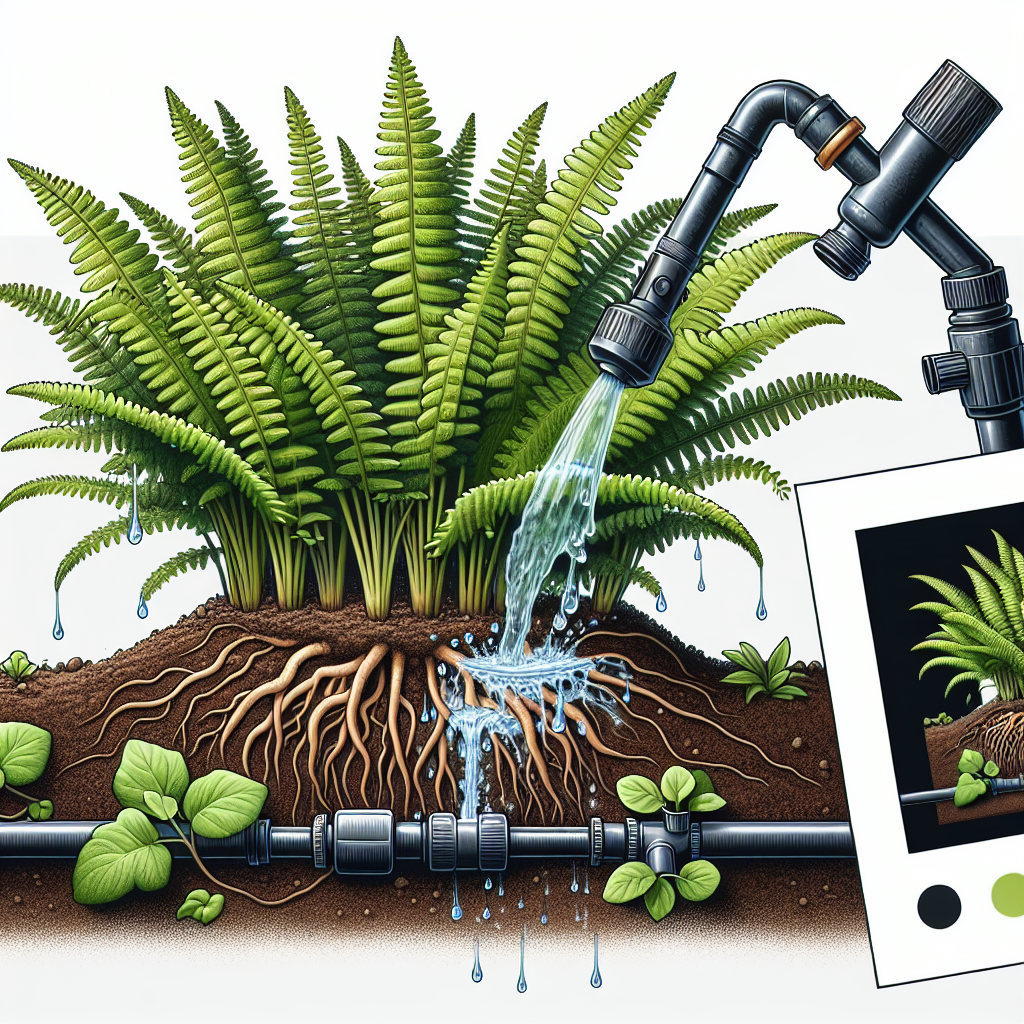Ferns are beautiful plants that can add a touch of lush greenery to any indoor or outdoor space. However, they require specific care and attention when it comes to watering. Implementing slow drip watering techniques for ferns can help maintain the optimal moisture levels for these delicate plants, ensuring they thrive and grow healthy.
When it comes to watering ferns, many people make the mistake of either overwatering or underwatering, both of which can be harmful to the plant’s health. Overwatering can lead to root rot and other issues, while underwatering can cause the plant to wilt and eventually die. This is where slow drip watering techniques come in handy, as they provide a consistent and controlled amount of water to the plant, ensuring it gets just the right amount it needs.
**Benefits of Slow Drip Watering Techniques**
One of the main benefits of using slow drip watering techniques for ferns is that it helps prevent overwatering. By providing a steady stream of water directly to the roots, you can avoid waterlogging the soil and ensure that the plant gets just enough moisture to thrive. This is especially important for ferns, which are sensitive to changes in moisture levels.
Another advantage of slow drip watering is that it promotes deep root growth. When you water your ferns using this method, the water seeps slowly into the soil, encouraging the roots to grow downward in search of moisture. This results in a stronger and healthier root system, which in turn leads to healthier and more vibrant foliage.
**How to Implement Slow Drip Watering Techniques**
To implement slow drip watering techniques for your ferns, you will need a few simple tools: a drip irrigation kit, a timer, and a container to catch excess water. Start by setting up the drip irrigation system near your ferns, making sure that each plant is getting an equal amount of water. Adjust the flow rate on the drippers as needed to ensure that each plant gets enough moisture.
Next, set up a timer on your irrigation system so that it waters your ferns at regular intervals throughout the day. This will help maintain consistent moisture levels in the soil and prevent under or overwatering. Be sure to also monitor the soil moisture levels regularly using a moisture meter or by simply sticking your finger into the soil.
**Tips for Successful Slow Drip Watering**
– Make sure that your ferns are planted in well-draining soil to prevent waterlogging.
– Adjust the flow rate on your drippers based on weather conditions – more water may be needed during hot spells.
– Check for clogs in your irrigation system regularly and clean them out if necessary.
– Consider using rainwater or distilled water for watering your ferns as tap water may contain chemicals that can harm them.
By implementing these tips and techniques for slow drip watering, you can ensure that your ferns stay healthy and vibrant year-round.
**FAQ**
Q: How often should I water my ferns using slow drip techniques?
A: It depends on factors such as humidity levels and temperature but generally aim for 2-3 times per week during dry periods.
Q: Can I use regular tap water for slow drip irrigation?
A: While tap water is fine for most plants, consider using rainwater or distilled water for your ferns as they are more sensitive to chemicals found in tap water.
Q: Do I need any special equipment for slow drip watering?
A: Yes, you will need a drip irrigation kit with drippers, tubing, and a timer – all readily available at most gardening stores.
In conclusion, implementing slow drip watering techniques for ferns can help ensure their health and vitality. By providing consistent moisture levels directly to their roots, you can avoid common issues such as overwatering or underwatering. With proper care and attention using these methods, you can enjoy lush and vibrant ferns in your home or garden all year long.













